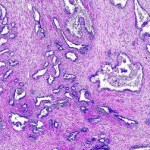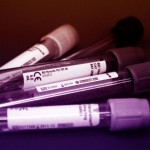#most cancers: Researchers Are Conducting huge research the use of Twitter, facebook
nearly forty% of men and women might be identified with most cancers in their lifetimes, with about 1.7 million of those cases anticipated in 2016 in the united states (according to the national cancer Institute). These sufferers are hoping for better therapies and, optimistically at some point, treatments. They is also treasured instruments, helping experts advance better remedies, if best workforce at research facilities like Dana-Farber cancer Institute in Boston might learn about their unique cases. Even patients with the same analysis, reminiscent of breast most cancers, have completely different genetic makeups, each in their wholesome cells and in their tumors. These differences provide clues to new genetic factors that will lead to the disease, why some patients reply particularly neatly to sure therapies, why some tumors are so resistant to remedy, and how folks of various ages or ethnicities are affected.
“an extraordinarily small fraction of grownup most cancers sufferers in the U.S. will get seen at these giant facilities, most certainly less than 15%,” says Nikhil Wagle, an oncologist at Dana Farber that specialize in breast most cancers. “The overwhelming majority…get handled in community hospitals where they get scientific care, however their tissue [sample] goes to the pathology department and sits there.”
it’s a classic “long tail” drawback: there is a large neighborhood of people, but they are unfold out. So extensive Institute/Dana-Farber Integrative cancer Biology software in Cambridge, Massachusetts, fashioned the Metastatic Breast cancer mission to find a lengthy tail answer: to find people on the net. “the normal manner is that when a affected person is at [a research] establishment, somebody will means them and ask them in person,” says Wagle. “We’re trying to complement that by using doing this 21st century, go straight away to sufferers.” That strategy has already netted about 1,seven-hundred people (each women and men) with metastatic breast most cancers—cancer that has spread past the breast, threatening other components of the physique. Wagle says that 95% of them have provided some information about their condition, and that more than 900 have agreed to share scientific information, tumor samples, and saliva (for genetic sequencing). those are huge numbers for the coalition’s first find out about venture, just launched in October 2015.
putting patients In cost
this is not a “build it and they’ll come” way. Sending out a tweet and making a hashtag is not going get people to return flocking (even supposing the crew has additionally accomplished that, at @MBC_Project and #mbcproject). “I’ve seen various other folks looking to do analysis research or recruitment efforts in the space of social media just through launching something with out patient enter, and so they have not been necessarily as a hit,” says Corrie Painter, a cancer researcher and Wagle’s partner on the challenge. as an alternative, they spent a yr finding allies. “We built quite a lot of in-particular person toughen among movers and shakers in the metastatic breast cancer community,” says Wagle, “individuals who have blogs or extremely followed Twitter feeds or had their very own facebook pages.” Early supporters included the Metastatic Breast cancer network; and the venture now has 15 give a boost to firms.
Painter already had personal expertise with on-line beef up networks. “i am six years out of an awfully uncommon cancer referred to as angiosarcoma,” she says. “I currently shouldn’t have illness, but it’s a highly aggressive, very rare, understudied cancer.” Angiosarcoma, which impacts the interior lining of blood vessels, will be the subsequent outreach challenge, expected to launch on the end of the summer. it is a super candidate as a result of it’s so rare: It takes the ability of the internet to seek out enough patients for a meaningful learn about.
In dealing with and advocating for her situation, Painter has worked throughout the Angiosarcoma cancer crew on fb. “As I build this find out about, i’m building it out with them,” says Painter. “When it comes from the patients themselves, it can be a lot extra powerful.” She used to be a postdoc at UMASS medical faculty learning most cancers immunology when she utilized for the job on the broad. “As a scientist, as an insider, I just really felt very strongly…that doing conventional academic drugs was once not going to be impactful,” says Painter.
One factor researchers decided along with sufferers used to be to set a low barrier for entry. individuals who enroll online get a hyperlink to a participant consent kind and then present the names of the locations where they have been handled and of the docs who have treated them. body of workers at the extensive (rhymes with “road”) Institute then name to get all the data, as well as already-biopsied tumor samples it will probably do developed genetic diagnosis on. “What’s sad is that someway it can be more uncomplicated for the doctor or every other clinic to get any person’s information than it’s [for patients] to get their very own data,” says Wagle.
contributors also present just a little of saliva in a kit that the broad Institute sends them. some of the valuable things sufferers present—one that these studies are especially excellent at amassing—is chronic remarks. Researchers can ask sufferers about other medical conditions they have and request further records. “we are able to create this in reality precise genomic map of their tumor, linked to all of their clinical data,” says Wagle, “after which, if we would like, related to additional questions we will ask the sufferers.”
All this information will feed both into research at the institute in addition to an open database of anonymized records that any cancer researchers can access. through the tip of 2016 the goal is for the huge to have its own information portal and in addition contribute data to a new, quickly-to-launched U.S. executive database referred to as the “national cancer Institute Genomic knowledge Commons.” The institute will add new information each six months. “If sufferers are willing to share their samples, share their stories, and share their knowledge, and they’re willing to selflessly give them up, we shouldn’t hoard them,” says Wagle.
Enthusiastic members
once the phrase will get to sufferers, they’ve been very keen to sign up for in, say the researchers. “We felt that the neighborhood of sufferers with metastatic breast most cancers have been crying out for extra research and would rally round this type of concept,” says Wagle. That made this condition a excellent one to start with, he says, but the vast Institute needs to expand to a number of other most cancers sorts, beyond the upcoming angiosarcoma venture.
The wide Institute’s approach caught the eye of the White house, which listed it for instance of innovation all the way through its Precision drugs Initiative summit in February. PMI is an overarching idea that medical treatments must be centered to and customized for individual sufferers—for example, via sequencing their unique genetic makeup. It overlaps with the White house’s cancer Moonshot, led by using vp Joe Biden, and focuses on tailored remedies that go beyond the usage of basic techniques like excessive doses of widespread chemotherapy medication. both White home tasks also emphasize bringing in as wide a coalition as conceivable, together with executive, industry, and sufferers themselves.
The Obama administration has made a big push to carry outdoor tech experts into executive—especially after the disastrous debut of the original Healthcare.gov website online. This includes bringing in numerous young folks—those millennials for whom issues like social media are 2d nature. but you do not have to be young to network on-line, say Wagle, an enthusiastic Twitter user who is about to show 38, and Painter, a fb aficionado in her early 40s. “We’re non-millennials who like social media,” says Wagle. “simply do not ask us to start our Snapchat channel, as a result of we have no idea how to try this.”
putting patients In charge
Enthusiastic participants
(36)













